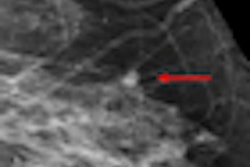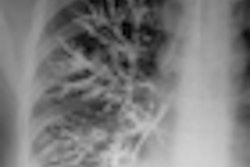Dear Women's Imaging Insider,
This year has certainly zipped by. If you're anything like me, you're scratching your head asking, "How is it almost August? Consequently, you won't want to miss some interesting stories in the Women's Imaging Digital Community.
Computer-aided detection (CAD) is already in use at breast imaging facilities, but mostly for detecting microcalcifications. In general, radiologists have less confidence in CAD for detecting masses because of the large number of false positives. But Dutch researchers believe they may have found a better solution; find out in this study.
It's not often that we take a moment and think about how far we have come; of how technology is so vastly different than it was years ago. Luckily, our history columnist, Dr. Adrian Thomas, does that for us! While not strictly about women's imaging, Dr. Thomas does include in his roundup a discussion of diagnostic pneumoperitoneum/gynecography, which predated ultrasound. Read all about it in his latest column, "Radiology's graveyard: Extinct exams you may not know about."
The perpetual debates in breast imaging are "Will anything replace mammography?" and "Does mammography really save lives?" Earlier this month, the Journal of the National Cancer Institute published a study on the latter, in which researchers from a French institute analyzed data from Sweden to make their controversial conclusion. See which side they came down on in the debate. For a rebuttal from well-regarded women's imager Dr. László Tabár, click here.
Other stories you'll find:
Many older women in the U.K. are coming into healthcare facilities with late-stage breast cancer, primarily because they are unaware of the signs and symptoms of the disease. You may be surprised to hear how radiographers can remedy the situation, and how the study has implications for breast care across Europe. Click here to read more.
How well does full-field digital mammography improve upon the performance of film-screen mammography? Does it do better in terms of the percentage of missed interval and screening-detected cancers? Find out in a study from Norwegian researchers.
How do you image women with silicone breast implants? MRI is probably the way to go, but what technique is best? How do you reduce silicone signal? Find out in a study published in European Radiology.
More stories abound in the Women's Imaging Digital Community so be sure to head over. As always, if you come across anything interesting or want us to increase our coverage of a particular area, feel free to drop me line.




















